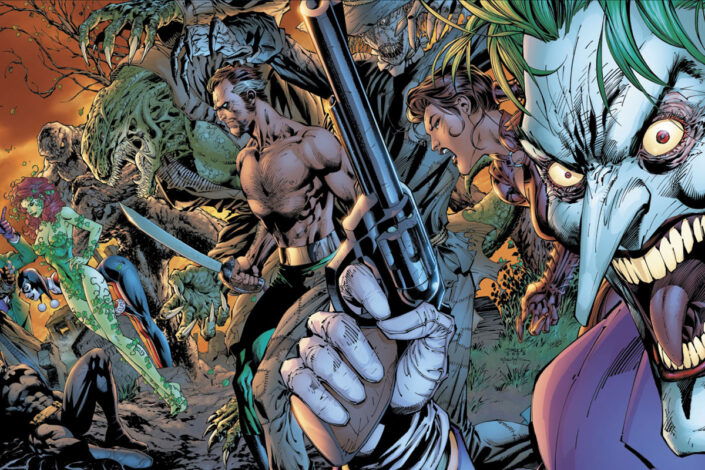
Batman is one of the most iconic comic book heroes, so it is not a surprise that some of his enemies are iconic comic book villains in their own right. But the infamous Batman Rogues Gallery comprises more than your usual suspects. With 85 years of comics under his belt, the Dark Knight had to stop a lot of criminals. As he is not a hero with powers, but one known for his high intelligence and fighting skills, he had to face a lot of intelligent, creative, and often misguided individuals.
These antagonists aren’t just obstacles for Batman. They are larger-than-life with personas that are often connected to the city’s corruption, darkness, and extremes. Most of them have been created to be reflections of his character, each embodying a different facet of his psyche, his mission, or the city he protects. This made the Rogues Gallery as diverse as it is iconic, with criminal masterminds, deranged psychopaths, tragic antiheroes, and cunning opportunists.
Also, you may ask where the term “Rogues Gallery” comes from. It finds its origin in law enforcement as it historically refers to a collection of criminal mugshots.
Follow the guide as we introduce you to the most notable antagonists who regularly face the Caped Crusader!
Batman’s Rogues Gallery: The Main Villains
When you fight crimes for more than a few decades, you assemble a long list of enemies. Some become more prominent than others though. It’s the case with the rogues Batman is facing.

Joker
First introduced in Batman #1 (Spring 1940), The Joker went from a criminal mastermind to a harmless prankster. He then disappears before being later on reintroduced as a more consequential menace. Today, the clown prince of crime represents everything Batman stands against. His origins are shrouded in mystery, but his obsession with Batman has become one of his defining traits as he views their relationship as a dark symbiosis. The Joker’s dark humor, unpredictability, and complete lack of morality make him Batman’s most dangerous foe.

Catwoman (Selina Kyle)
Also first introduced in Batman #1, Catwoman is an antihero and skilled thief who blurs the lines between friend and foe–that’s why she’s in Batman’s Rogues Gallery as well as in the Bat Family. Selina Kyle is defined by her charm, intelligence, and agility. Those are the perfect tools for a cat burglar who likes to target the rich and powerful. Combined with her independence, inventiveness, and moral code, Catwoman is both Batman’s enemy and a kindred spirit. That’s why their relationship is so complex.

Penguin (Oswald Cobblepot)
The Penguin first appeared in Detective Comics #58 (December 1941). He is a cunning and vicious criminal genius who frequently poses as a respectable businessman. Born Oswald Cobblepot, he uses his anger to create a criminal empire that is frequently based around his nightclub, the Iceberg Lounge. In contrast to many of Batman’s adversaries, The Penguin is more reliant on his wealth, connections, and guile than on his physical attributes. His witty humor, aristocratic manner, and his famous usage of weaponized umbrellas are some of his distinguishing characteristics.

The Riddler (Edward Nygma)
Introduced in Detective Comics #140 (October 1948), The Riddler is a narcissistic criminal obsessed with demonstrating his superior intelligence. Through challenging riddles, traps, and complex puzzles, Edward Nygma puts Batman’s detective abilities to the test. His obsession with leaving traces at crime sites is his defining characteristic; this combination of insecurity and conceit frequently brings him to ruin. The conflicts between Batman and The Riddler represent a collision of intellects, and as such, their clashes are as much cerebral as they are physical.
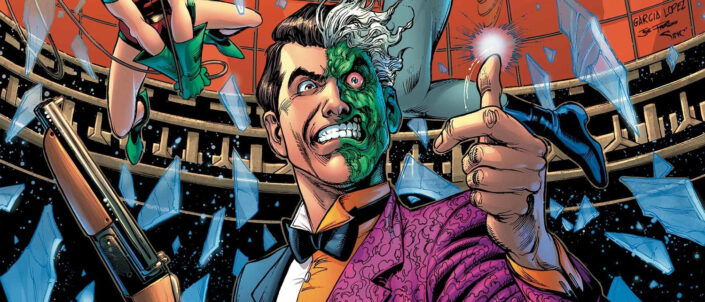
Two-Face (Harvey Dent)
Two-Face first appeared in Detective Comics #66 (August, 1942) and after a few stories, he disappeared before being reintroduced as a more compelling enemy to Batman during the 1970s. Harvey Dent is a former Gotham’s idealistic district attorney who suffered a mental breakdown that let his darker side out after he was attacked by a mafia boss and had his face damaged by acid. His internal conflict between good and evil is reflected in his defining characteristic of depending on a coin flip to decide his course of action. Batman views Two-Face’s decline as a personal failing because the two were previously partners in the battle against crime.

Poison Ivy (Pamela Isley)
Created for Batman #181 (June 1966), Poison Ivy is an eco-terrorist and botanist with the power to control plant life and manipulate others through pheromones. Pamela Isley’s transformation into Poison Ivy was born from betrayal and scientific experimentation, leading to her crusade to protect the natural world at all costs. Her defining traits are her deep connection to nature, her disdain for humanity’s exploitation of the environment, and her often seductive yet deadly persona. While a villain, she is occasionally portrayed as a reluctant antihero.
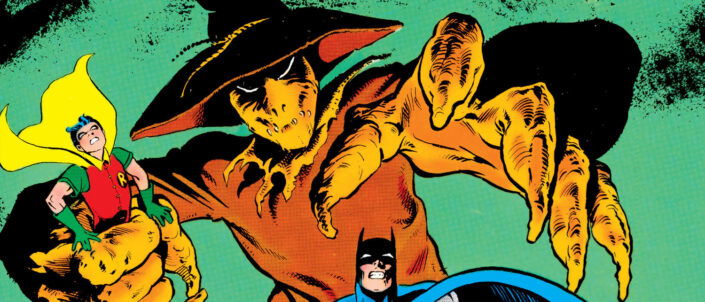
Scarecrow (Jonathan Crane)
The villain Scarecrow, a former psychologist introduced in World’s Finest Comics #3 (Fall 1941), uses fear as a weapon. Jonathan Crane poses a psychological threat to Batman and Gotham because of his research using hallucinogenic chemicals to induce fear. His obsession with fear, which he sees as the ultimate instrument of control, is what makes him unique. Batman is frequently forced to face his anxieties and vulnerabilities as a result of Scarecrow’s intensely personal issues.
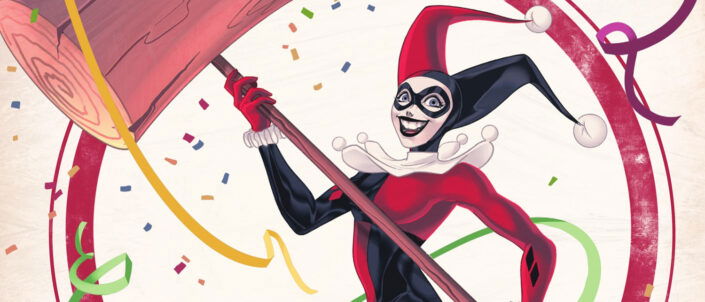
Harley Quinn (Harleen Quinzel)
Created for the show Batman: The Animated Series, Dr. Harleen Quinzel was a psychiatrist at Arkham Asylum before falling in love with the Joker and changed into his erratic and disorderly accomplice, Harley Quinn. Harley has developed into a multifaceted figure, escaping the Joker’s grasp and paving her own way. One of Batman’s most surprising enemies and occasional ally, she is distinguished by her acrobatic agility, insane sense of humor, and combination of savagery and innocence.

Clayface (Basil Karlo, Matt Haggen, and more)
The moniker Clayface is shared by several characters who are all linked by their capacity to change their shape, typically as a result of mishaps or experiments involving hazardous substances. Clayface’s adaptability, tragic beginnings, and chance for redemption are what make him unique, whether it’s the actor Basil Karlo’s desire for vengeance (first introduced in Detective Comics #40, June 1940) or Matt Hagen’s terrible decline after turning into a horrific creature. He is a special and difficult enemy for Batman because of his capacity to imitate anyone.

Mr. Freeze (Victor Fries)
Introduced as Mr. Zero in Batman #121 (February 1959), Mr. Freeze has since been renamed, and, following his popular appearance in the show Batman: The Animated Series, he has been redefined. Now, Victor Fries is a tragic villain motivated by love for his terminally ill wife, Nora, whom he keeps cryogenically frozen in the hopes of discovering a cure. He became dependent on a sub-zero suit after a mishap during one of his experiments, which increased his power but isolated him from humanity. His defining characteristics are his cool reasoning, emotional detachment, and undying loyalty to his wife.
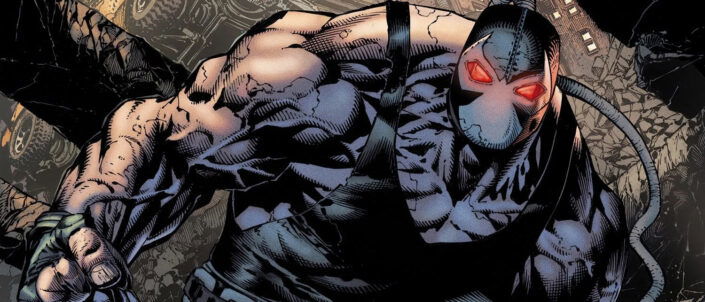
Bane
A more recent rogue, Bane first appeared in Batman: Vengeance of Bane #1 (January 1993). Known for breaking Batman’s back in the Knightfall comics storyline, Bane is a tough opponent both mentally and physically. He was born and reared in the harsh Peña Duro prison, where he used the narcotic Venom to gain extraordinary strength and a sharp strategic mind. He is a villain who can compete with Batman on all fronts because of his tremendous physical strength, strategic acumen, and steadfast resolve.
View The Recommended Reading Guide
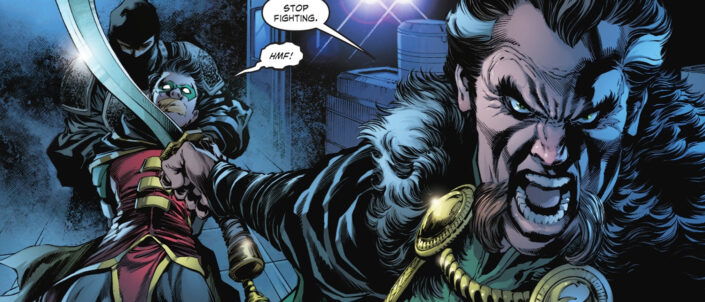
Ra’s al Ghul
Ra’s al Ghul is the League of Assassins’ eternal commander. Introduced in Batman #232 (June 1971), Ra’s is an ecoterrorist and centuries-old warrior who uses violence to rid the planet of environmental damage and corruption. Because he sees a kindred spirit in Batman, he considers him a worthy successor and even offers him his empire. Ra’s genius-level intelligence, ability in battle, and usage of the Lazarus Pit—which prolongs his life at the expense of his sanity—have made him one of Batman’s most dangerous enemies.
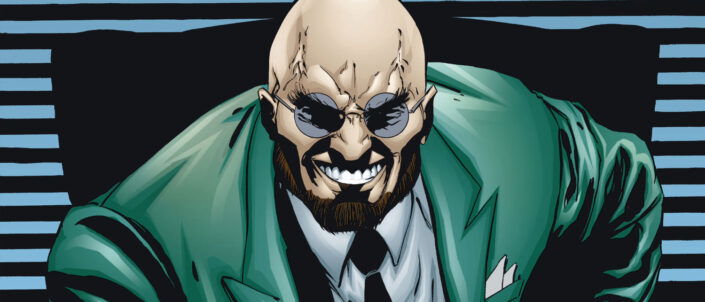
Professor Hugo Strange
First appearing in Detective Comics #36, he is Batman’s oldest adversary and one of his most dangerous foes. He is a gifted but insane psychologist who is fixated on figuring out who Batman really is. He challenges the Dark Knight by using cunning and psychological trickery. Strange’s genius-level intelligence, his interest in identity and terror, and his readiness to engage in unethical experiments and mind games are his defining traits.
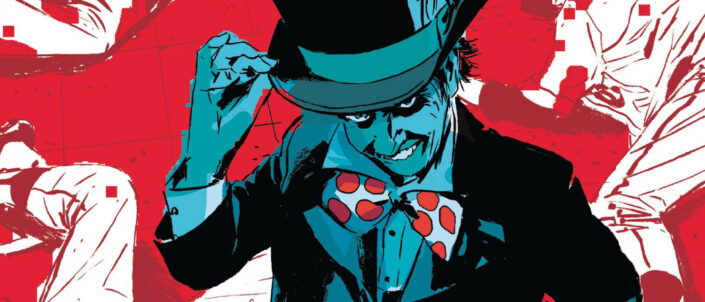
Mad Hatter (Dr. Jervis Tetch)
Introduced in Batman #49 (October 1948), The Mad Hatter is a criminal with delusions who is fixated on Alice in Wonderland. Jervis Tetch manipulates people with mind-control technology, frequently portraying himself as a perverted version of the characters in the book. He is defined by his fascination with Alice-themed themes, his innocent exterior belying a cunning mind, and his use of technology to control his victims.
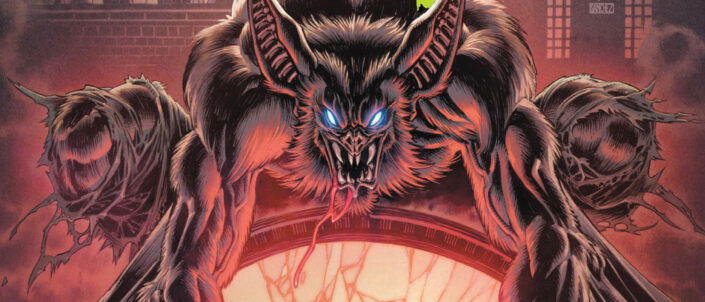
Man-Bat (Dr. Kirk Langstrom)
Dr. Kirk Langstrom was first introduced in Detective Comics #400 (June 1970) as a scientist who, during a botched experiment, unintentionally changes into a gigantic bat-like creature. Although not intrinsically malevolent, his metamorphoses into Man-Bat frequently result in uncontrollable violence. Man-Bat’s terrible past, his battle to control his hideous shape, and the hazy boundary between his humanity, and his impulses are what make him a formidable friend… or foe of the Batman.
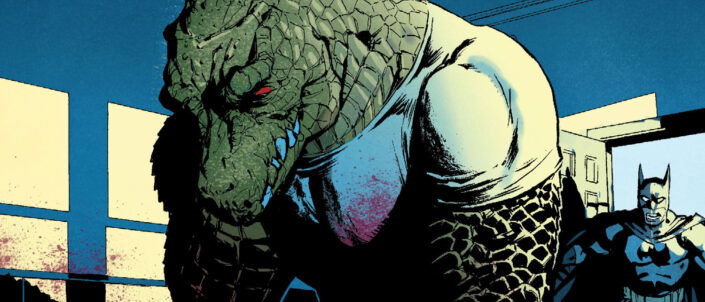
Killer Croc (Waylon Jones)
Because of a rare genetic abnormality, Killer Croc is a metahuman with reptilian traits. First appearing in Batman #357 (March 1983), Waylon Jones, who was born into poverty and was teased because of his appearance, became a criminal and frequently operated as an independent predator or ruthless enforcer. His tremendous power, animalistic tendencies, and deep-seated animosity toward people are what make him uniquely dangerous.

Talia al Ghul
Ra’s al Ghul’s daughter Talia is a complex figure in Batman’s life who made her debut in Detective Comics #411 (May 1971). She frequently vacillates between being an ally and an enemy because she is torn between her love for Bruce Wayne and her devotion to her father’s vision. She has a close, personal bond with Batman because she is the mother of Damian Wayne. She is defined by her cunning, fighting skills, and steadfast dedication to her cause and family.

Hush (Thomas Elliot)
Introduced in Batman #609 (2003), Hush is Bruce Wayne’s childhood friend Thomas Elliot, who is bitter against him. Elliot is a skilled surgeon and strategist who masterfully plans intricate schemes to ruin Bruce’s life and reputation. His ability to influence people into carrying out his plans, his personal grudge against Bruce Wayne, and his deliberate ruthlessness positioned him to become one of Batman’s fiercest adversaries as Hush targets both the superhero and the man behind the mask.
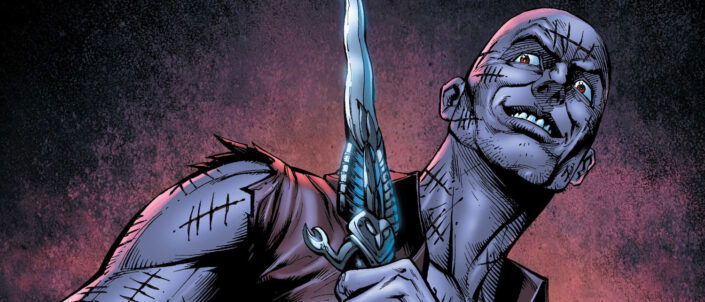
Victor Zsasz
Batman: Shadow of the Bat #1 (June 1992) added a sociopathic serial killer to the list of Batman’s enemies. Victor Zsasz views murder as a means of “liberating” his victims. He treats his body as a hideous log of his misdeeds, carving a tally mark into it for each life he takes. With his preoccupation with killing, his unpredictable and sadistic personality, and his terrifying lack of humanity, Zsasz became one of Gotham’s most heinous and unredeemable criminals.

Calendar Man (Julian Day)
Making his finest appearance in Detective Comics #259 (September 1958), Calendar Man is a methodical villain who carries out crimes associated with particular days and occasions. Julian Day is renowned for his painstaking preparation and time preoccupation, and he frequently leaves hints that test Batman’s detective abilities. His obsession with dates, his cerebral approach to crime, and his uncanny composure made Calendar Man a clever adversary for the Dark Knight.
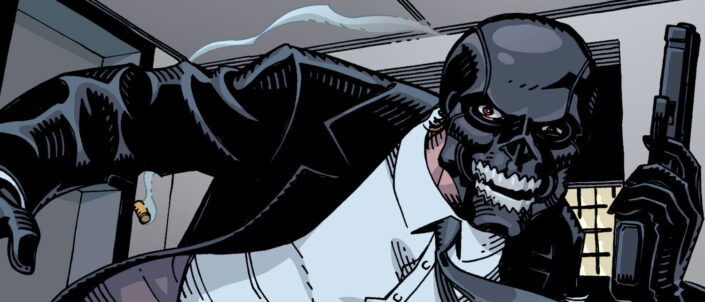
Black Mask (Roman Sionis)
Known as Black Mask, Roman Sionis was introduced in Batman #386 (August 1985) as a vicious mob boss who wears a frightening mask like a skull. He was born into wealth, but after a string of betrayals and personal setbacks, he turned to crime and developed a personal hate for Bruce Wayne. He quickly became a major player in Gotham’s underworld, making use of his sadistic cruelty to get what he desires. This often puts him on the path of Batman who’s always trying to take down organized crime.
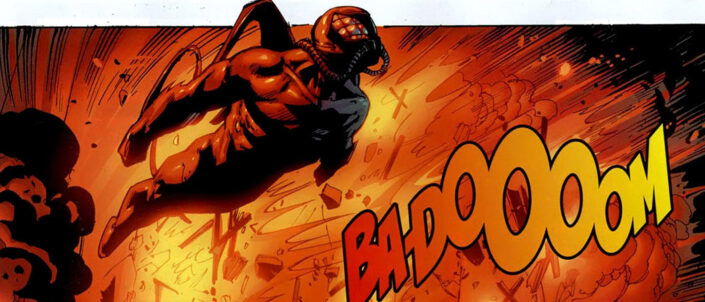
Firefly (Garfield Lynns)
Making his debut in Detective Comics #184 (June 1952), Firefly is a pyromaniacal arsonist who spreads devastation with cutting-edge technology. After falling on hard things, Garfield Lynns, a former special effects expert, turned to crime. His destructive habits, use of a flame-throwing jetpack, and preoccupation with fire pushed him toward chaos.
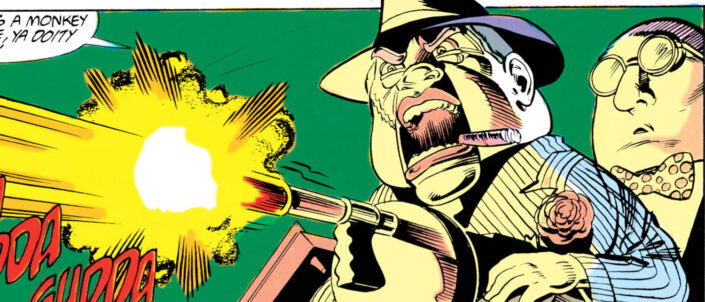
The Ventriloquist & Scarface (Arnold Wesker)
A ventriloquist dummy with a gangster theme, Scarface serves as a conduit for the darker tendencies of Arnold Wesker, a timid man suffering from dissociative identity disorder who was introduced in Detective Comics #583 (February 1988). Arnold is incapable of asserting himself without the puppet. Some think Scarface is only a way to let the criminal genius and his aggressive tendencies out in the open, but Arnold sees himself as a victim of his puppet.

Cluemaster (Arthur Brown)
Making his debut in Detective Comics #351 (May 1966), Cluemaster is Arthur Brown, a former game show host who turned criminal and taunts law enforcement by leaving clues about his crimes. Cluemaster’s hints are meant to deceive and divert, not to demonstrate genius like those in The Riddler. He rapidly abandoned his gimmick and often offered his strategic skills to other criminals. It is to be noted that Cluemaster is the father of Stephanie Brown, who goes on to become Batgirl and Spoiler.